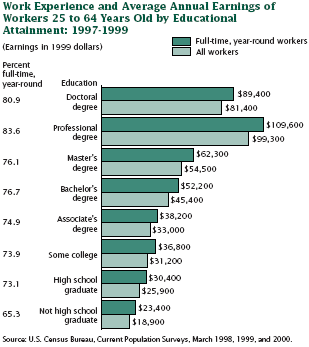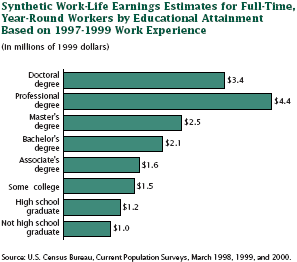- information For
International

Learn more about becoming an international student at Holy Spirit University of Atlanta
International StudentsCorporate Partners

Our Corporate Partners provide their employees and students with education opportunities.
Corporate PartnersCurrent Students

Resources for current University of Holy Spirit Atlanta Students
Current StudentsWorking Adults

Every day, talented individuals are proving it's never too late to think about the future.
Working AdultsTransfer Students

Learn about transferring your previously earned college credits to Holy Spirit University of Atlanta
Transfer StudentsAlumni

Holy Spirit University of Atlanta is dedicated to the support, engagement, and involvement of our graduates.
AlumniOnline Campus

Explore our website to learn more about Holy Spirit University of Atlanta
Online Campus - Learn Center Log-In
- P: +1 (877) 633-6171
- F: +1 (813) 315-7878

Graduate Expectations
Historically, Education has paid off.
Over the past 25 years, earnings differences have grown
among workers with different levels of educational attainment.
As Figure 2 shows, in 1975, full-time, year-round workers
with a bachelor’s degree had 1.5 times the annual earnings
of workers with only a high school diploma. By 1999, this
ratio had risen to 1.8. Workers with an advanced degree,
who earned 1.8 times the earnings of highschool graduates
in 1975, averaged 2.6 times the earnings of workers with
a high school diploma in 1999. During the same period, the
relative earnings of the least educated workers fell. While
in 1975, full-time, year-round workers without a high school
diploma earned 0.9 times the earnings of workers with a
high school diploma; by 1999, they were earning only 0.7
times the average earnings of high school graduates.
The historical change in relative earnings by educational attainment may be explained by both the supply of labor and the demand for skilled workers. In the 1970s, the premiums paid to college graduates dropped because of an increase in their numbers, which kept the relative earnings range among the educational attainment levels rather narrow. Recently, however, technological changes favoring more skilled (and educated) workers have tended to increase earnings among working adults with higher educational attainment, while, simultaneously, the decline of labor unions and a decline in the minimum wage in constant dollars have contributed to a relative drop in the wages of less educated workers.
 Earnings increase with education level
Earnings increase with education level
Adults ages 25 to 64 who worked at any time during
the study period 5 earned an average of $34,700 per
year.6 Average earnings ranged from $18,900 for high
school dropouts to $25,900 for high school graduates,
$45,400 for college graduates, and $99,300 for workers
with professional degrees (M.D., J.D., D.D.S., or
D.V.M.). As shown in Figure 1, with the exception
of workers with professional degrees who have the
highest average earnings, each successively higher
education level is associated with an increase in
earnings.
 SYNTHETIC EARNINGS
SYNTHETIC EARNINGS
Earnings differences by educational attainment compound
over one’s lifetime.
Synthetic estimates of work-life earnings dramatically
illustrate the differences that develop between workers
of different educational levels over the course of their
working lives.
As shown in Figure 3, for full-time, year-round workers,
the 40-year synthetic earnings estimates are about $1.0
million (in 1999 dollars) for high school dropouts,
while completing high school would increase earnings
by another college, and nearly twice as much as workers
with only a high school diploma. A master’s degree holder
tops a bachelor’s degree holder at $2.5 million. Doctoral
($3.4 million) and professional degree holders ($4.4
million) do even better.







